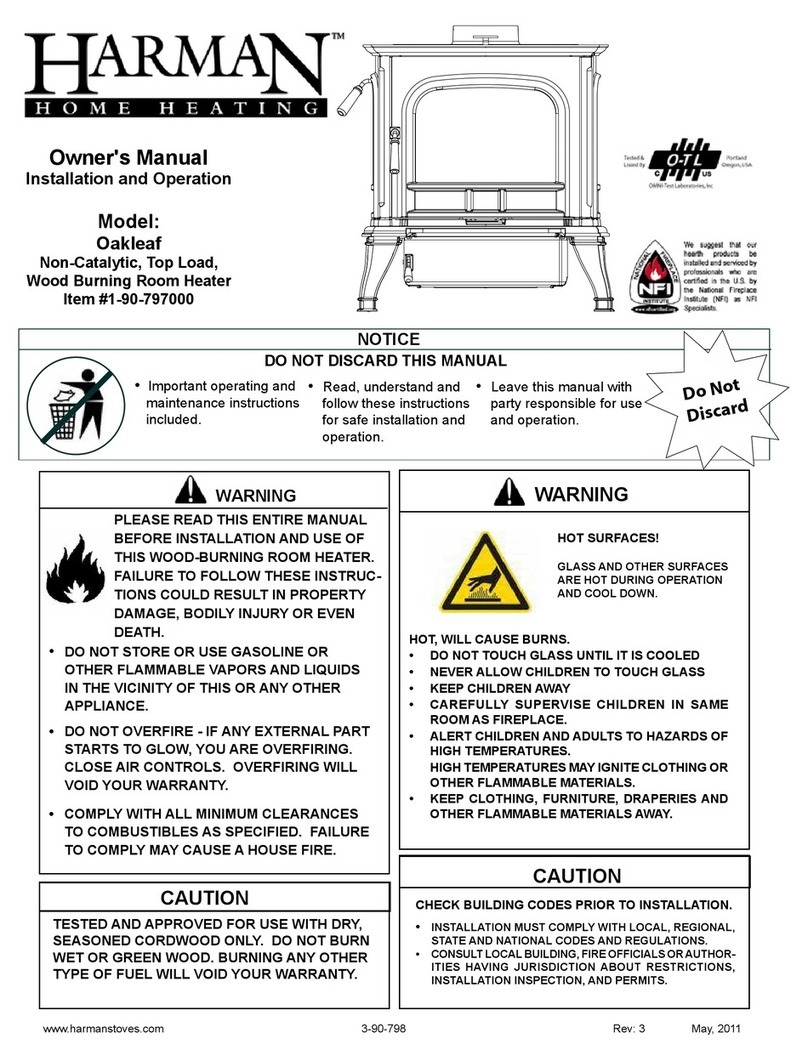
4Harman Oakwood
Thank you for purchasing the Harman Oakwood. We are condent that you will enjoy the warmth and con-
venience of your Harman Stove for decades to come.
The Harman Oakwood will heat your home while also being multi-functional and visually appealing. When
building your Oakwood, we used only the best precision castings that were designed, so accurately, that
gaskets are used (instead of furnace cement) for assembly.
Harman’s special FireDome, Non-Catalytic, Combustion System was created specically for the Oakwood to
promote clean burning and even heat output. What this equates to is unvarying heat throughout your home over
a longer period of time without the peaks and valleys of other wood stoves. The FireDome attains Harman’s
reputation of high efciency while saving you the expense associated with catalytic stoves. Top loading makes
adding wood easier and allows you to view your beautiful re through the extra large glass door. The glass
stays cleaner because of specially coated glass and the exclusive Harman Air Wash System.
The Harman Oakwood has an ash pan with its own ash door that is used to remove ashes while the stove is
in operation. This means you can keep one re all winter if you desire.
The Harman Oakwood offers a cooking grill that can be placed in the top of the stove while in operation. This
allows you to grill steaks and burgers etc. all year long, even when the weather is not suitable for outside
grilling. If you haven't already purchased the cooking grill, you can do so through your Harman Dealer.
Due to the fact that the Oakwood is hot while in operation, gloves should be worn while tending to the re.
INTRODUCTION
For your reference, please
copy the serial number from
the label on your stove to the
box below.
SERIAL NUMBER
This appliance is also
approved for installation
into a shop.























